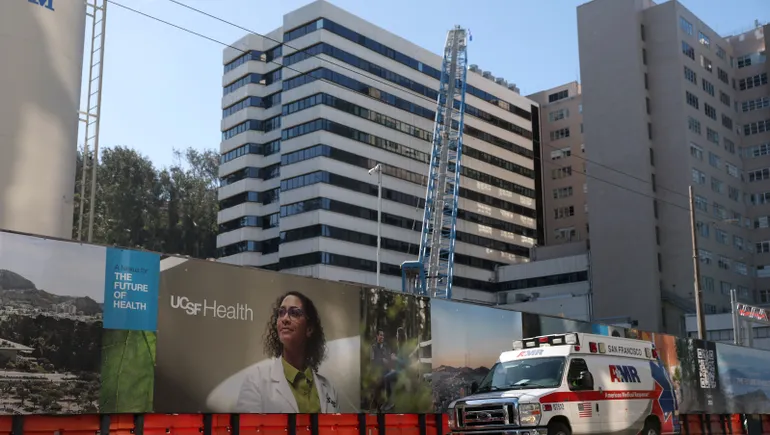Economic uncertainty has slowed construction momentum across many nonresidential sectors. But for healthcare projects, developers have not shown signs of a pullback, according to Robins & Morton, a Birmingham, Alabama-based construction firm.
That’s one of the takeaways from the firm’s 2025 State of Healthcare Construction report, which draws highlights from healthcare executives, architects and contractors in the healthcare construction space. This year’s report explores topics such as sustainability, design and cybersecurity, all through the lens of a construction partner’s role on these projects.
The report noted the pace of healthcare construction has largely held steady, in part because facilities still need to modernize in order to compete, said Derek Gregg, vice president of operations at Robins & Morton. Spending on healthcare construction hit $69.78 billion in February 2025 and remains up 2.1% compared to year-ago levels.
At the same time, healthcare developers are relying more heavily on their contractors early in the process to manage rising costs, mitigate risk and keep projects on track.
Here, Gregg talks with Construction Dive about design changes, spending behavior and what contractors can expect in the year ahead in healthcare construction.
This interview has been edited for brevity and clarity.
CONSTRUCTION DIVE: Many construction firms are reporting slower decision-making in the current environment. What did your team observe specifically regarding healthcare construction activity?
DEREK GREGG: Healthcare construction is somewhat unique in that it is more insulated from economic uncertainty than other sectors for a couple of reasons.

Derek Gregg
Permission granted by Robins & Morton
First, demand for healthcare services remains the same regardless of economic activity. Second, the process of planning healthcare projects, raising or allocating appropriate funding and beginning construction activities often takes place on a longer timeline than other commercial ventures.
This means that our clients expect market fluctuations throughout that timeline and make allowances so their projects can continue. Overall, we haven’t seen significant changes in the approach to new projects.
The report notes growing interest in sustainability and resiliency. What are healthcare clients prioritizing in their project specs?
It’s difficult to generalize, as every healthcare system has different priorities, ranging from corporate sustainability commitments to the geographic location of their real estate.
For example, Robins & Morton does a significant amount of work in the Southeast and in Florida, hardening and resilience remain top-line issues for healthcare projects. We’re also seeing clients opt for more energy-efficient equipment, which often comes with higher upfront costs.
By using tools such as life cycle assessments, they can more accurately predict long-term cost savings and get ahead of potential regulatory changes. Along with the desire to build healthier spaces, our clients are using more comprehensive data to make informed decisions regarding sustainability.
What design shifts do you see influencing the healthcare construction space?
A significant influential factor in current and future healthcare design is competition.
We’re seeing a trend in Certificate of Need reform. Certificate of Need laws regulate healthcare construction and in states where the laws are active, healthcare systems or practices must apply for authorization to build new healthcare facilities. When approved, there’s an increase in competition among health systems for patients and talent.
Health systems want to be able to promote their facilities’ amenities, technology and convenience to attract and retain staff, as well as patients.
Additionally, we’ll see a continued emphasis on futureproofing with flexible space and high-capacity tech infrastructure.
What are some other crucial trends you think are important to mention around healthcare construction?
Overall, today’s healthcare facilities are more complex than ever and require more interdisciplinary collaboration.
We only expect this complexity to increase, and it’s not enough to simply build a designed building. By listening to the pulse of the healthcare industry and aligning that insight with macroeconomic knowledge, we can better understand how we can help alleviate operational challenges and pressures for our clients.
View the original article and our Inspiration here


Leave a Reply